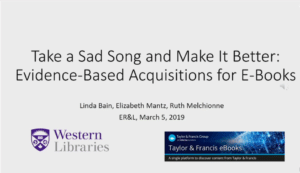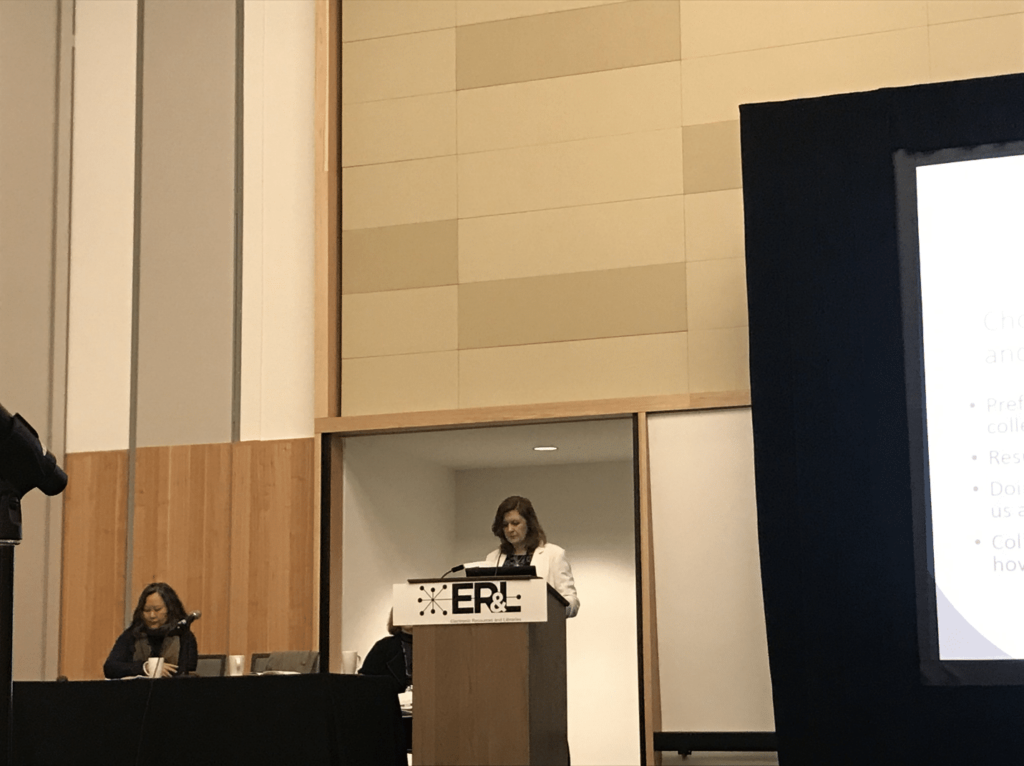Evidence-Based Acquisitions for E-Books
At the 2019 Electronic Resources & Libraries Conference, Taylor & Francis presented a joint session with Western University. The premise of the session was to hear how library-vendor relations are built on a foundation of trust that can be mutually beneficial to both stakeholders.
Academic libraries are looking to shift practices to identify the best possible collection choice. eBooks are becoming more and more mainstream and publisher platforms are preferred over aggregate platforms. However, issues often arise when setting up an evidence-based program. At this session, Taylor & Francis and Western University provided tips on how to avoid these issues. Below is a recap of this session.
Communication
It is important to communicate early on and often. It all comes down to establishing and maintaining a balance of what an institution needs and what Taylor & Francis suggests would be a viable option. Evidence-Based Acquisitions require time and commitment, especially to overcome challenges that occur such as having multiple librarians or funding from different places, so communication is of utmost importance.
Usage Statistics
It is essential for the University to request usage statistics early on. Each institution should discuss what they would like included in usage metrics. Usage differs from school to school, so each institution should determine what constitutes as quality usage for them specifically.
MARC Records
When setting up an Evidence-Based Acquisition, the University should ask when MARC Records can be expected. It is important for librarians to receive these in order to assess the success of the program, share and review usage statistics.
With an Evidence-Based Acquisitions agreement, Taylor & Francis helps customers discover what will work as an alternative if statistics are lower than preferred. With this agreement different factors can be altered, such as the continued monitoring of denials. Western University believes that a year is enough time to evaluate usage. A year can determine which titles are being used and which titles are not being used.

